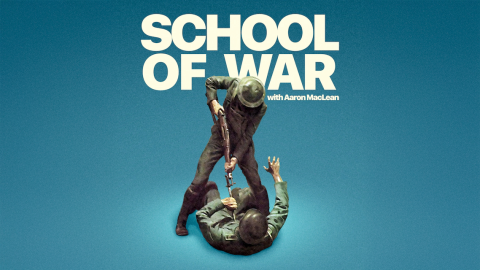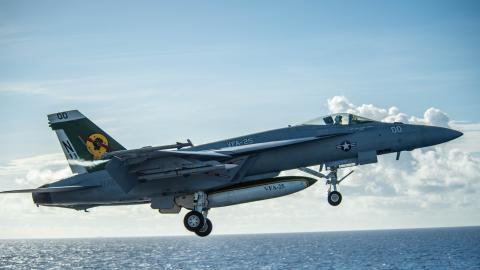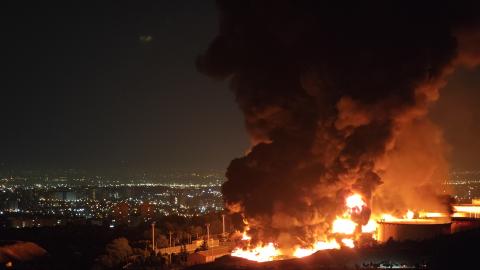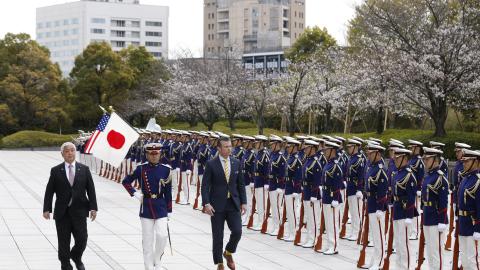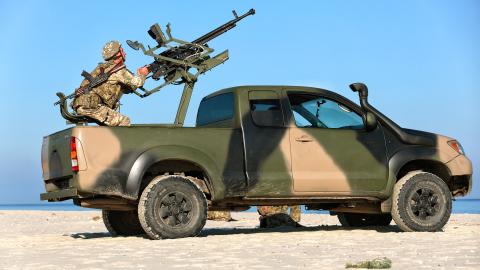Below Senior Fellow Can Kasapoğlu offers a military situation report about the war in Ukraine.
Executive Summary
• North Korea has reportedly deployed military personnel to occupied parts of Ukraine.
• New drone warfare technologies continue to shape the battlefield.
• The Kharkiv front is deteriorating for Ukraine as the Russian military hits the area’s electrical grid.
• Moscow has transferred 50,000 servicemen to Kursk, tilting the force-on-force balance in its favor.
1. North Koreans Reportedly Deployed in Ukraine
Last week, leaked intelligence reports suggested that North Korean personnel may have been killed in a Ukrainian missile strike inside Russian-occupied Ukraine. The strategic implications of this development cannot be overstated.
Defense cooperation between North Korea and the Kremlin has been on the upswing for some time. Russian President Vladimir Putin and North Korean leader Kim Jong Un signed a strategic defense agreement on June 19 of this year, which committed North Korea to deploying engineering detachments to support Russian operations, including in Ukraine. The discovery of North Korean personnel in Ukraine suggests that not only is Pyongyang providing Moscow with weaponry; it is now sending its own troops to fight in Russia’s invasion. News outlets have alleged that the North Korean personnel killed in Ukraine were missile operators sent to launch KN-23 ballistic missiles, while Russian sources have argued that the deceased servicemen were visiting the front line to gain experience.
The aid Pyongyang has extended to the Russian military has allowed the Kremlin to sustain its invasion of Ukraine. But it is what Kim could be getting in return for this assistance that keeps intelligence analysts awake at night. Russia could offer North Korea submarine-launched ballistic missile technology to give Pyongyang a nuclear second-strike capability, space systems that could extend North Korea’s reach in the skies, and design expertise to advance the dictatorship’s weapons of mass destruction (WMD) program. Notably, even before the war in Ukraine, the United States Department of State and Department of Treasury sanctioned several Russians and Russian companies for involvement in Pyongyang’s nuclear program. Thus, the possibility of Russian assistance to North Korea’s WMD efforts should not be dismissed.
The increasing defense cooperation among Russia, Iran, China, and North Korea may presage the beginning of a new era of great power competition. This hostile axis poses a significant challenge to the US, the North Atlantic Treaty Organization, and Washington’s allies around the world.
2. Drone Warfare Technologies Continue to Shape the Battlefield
Emerging and disruptive robotic warfare technologies continue to shape the battlefield in Ukraine—and the future of warfare.
Ukraine’s Vampire bomber drone, so named because of its ability to strike at night, has received another fearsome moniker: Baba Yaga, after a frightening mythical creature. Last week, one such drone hit a Russian main battle tank, marking the first time the munition has struck moving heavy armor.
Additionally, the Ukrainian defense company United Military Solutions has introduced a new aerial drone to the battlefield—a loitering munitions baseline called the Stick M12. The system, which costs just $2,550, is powered by a single electric engine, has a range of 45 miles, and can fly for up to one hour. So far the drone has been provided to Ukraine’s 100th Mechanized Brigade.
Finally, Russian surveillance drones were spotted last week carrying electronic warfare (EW) equipment to jam Ukrainian first-person-view (FPV) drones in midair. These developments in robotic warfare technologies will continue to alter the course of the conflict.
3. Battlefield Assessment
Last week the Russian military maintained an offensive footing at multiple flashpoints across Ukraine.
In particular, the situation around Kharkiv continues to deteriorate. Local authorities have ordered the evacuation of the nearby city of Kupiansk and the towns in its vicinity due to the destruction of the area’s electrical grid and energy infrastructure. In Vovchansk, another critical flashpoint near Kharkiv, Russian combat formations have used large amounts of North Korean ammunition.
The Ukrainian high command reported intensive attacks from Shahed drones, and the Russian Aerospace Forces (VKS) pounded Ukraine’s civilian population. As it has in previous weeks, Pokrovsk remained the main target of the Russian invasion in eastern Ukraine, though important fighting also raged near Toretsk. Although both sides’ operational tempos were high around these cities, the battlefield geometry remained static.
The Kremlin’s forces intensified their mechanized offensives to destroy the Ukrainian positions in the Russian region of Kursk. In many engagements there, Ukraine has managed to inflict casualties and material losses on Russian combat formations. Nonetheless, the Russian military, capable of weathering high casualties, has pushed toward Ukrainian lines multiple times. The Ukrainian General Staff estimated that Moscow has deployed 50,000 troops to Kursk. The transfer of these troops, chiefly from Ukraine’s south, could weaken Russia’s fighting capabilities elsewhere. But the force-on-force and force-to-terrain ratios in Kursk now favor Russia.
Last, Ukraine continued to conduct long-range strikes to counterbalance Russia’s upper hand in land warfare. Recently, the Ukrainian military struck an ammunition depot in the Russian Republic of Adygea, 280 miles from Ukraine. According to the Ukrainian Security Service (SBU), the base hosted Russian aerial platforms, including high-end Su-34 and Su-35 combat aircraft. Though available open-source intelligence cannot yet provide a comprehensive battle damage assessment and no aircraft wreckage has been detected thus far, initial findings indicate impact craters near the base that suggest heavy strikes.



